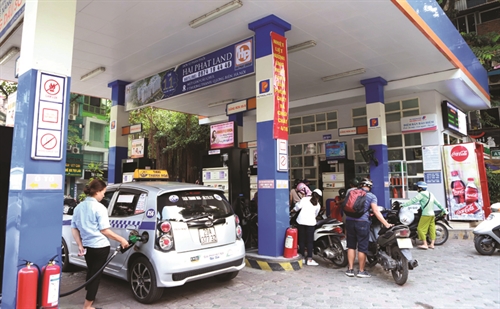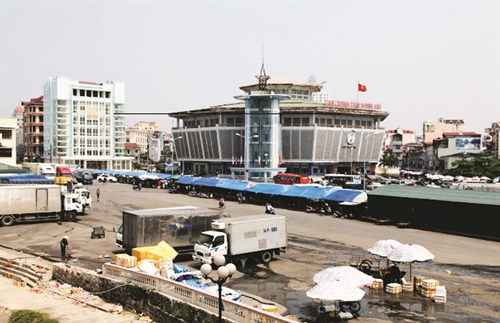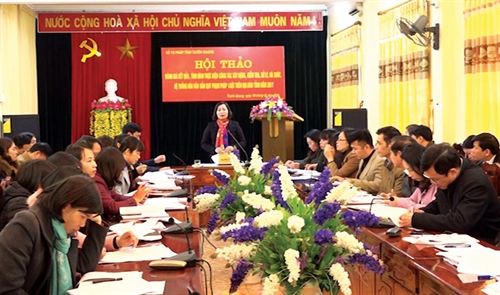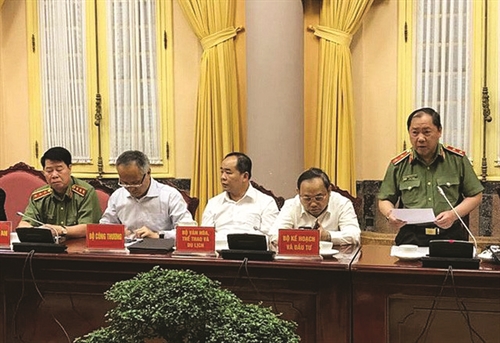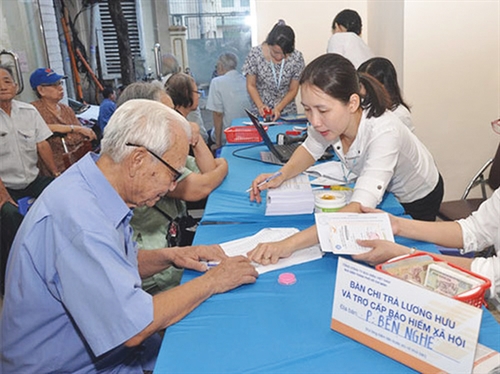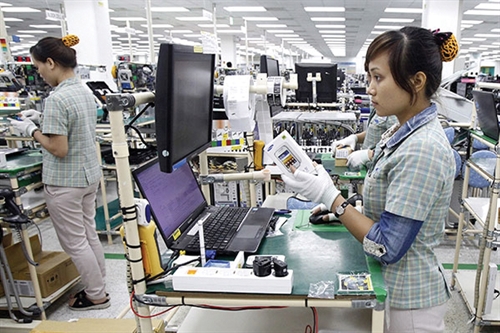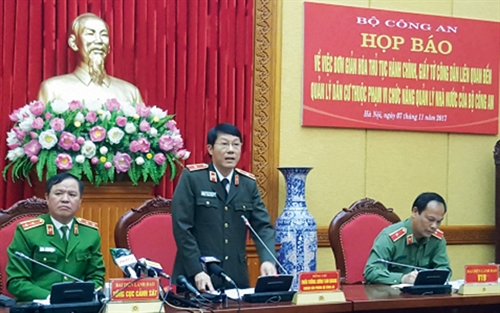Nearly 40 years ago in 1981, Vietnam joined the Convention on Elimination of All Forms of Discrimination Against Women (CEDAW). Since then, the country has adopted many laws and policies to improve women’s leadership and political participation. This article looks into and proposes solutions for increasing female participation in politics in Vietnam.
Luong Van Tuan
Law Faculty - Vietnam Women’s Academy
Policies and laws on female participation in politics
Enhancing women’s role and position in the political and public life is a political commitment of the Vietnamese Communist Party and State to the people and the world. In light of this, the Party and State have always devoted constant attention to women’s development, considering it a solution to sustainable social development and a bright future for the country.
In April 2007, the Party’s Political Bureau adopted Resolution 11/NQ-TW on women-related issues in the period of accelerating the national industrialization and modernization. The Resolution pointed out the situation by that time that “the rate of women holding leading and managerial positions remains low and is not commensurate with the capacity and development of the female workforce; the supply of female personnel is dwindling and, in some domains, the rate of female cadres has dropped.”
In Vietnam, gender discrimination is constitutionally prohibited. With a view to achieving genuine equality between men and women, Article 26.1 of the 2013 Constitution stipulates: “Male and female citizens have equal rights in all fields. The State shall adopt policies to guarantee the right to and opportunities for gender equality.” At the same time, in order to establish priorities for women, Article 26.2 of the Constitution states: “The State, society and family shall create the conditions for women to develop comprehensively and to advance their role in society.” With these provisions, the Constitution has established gender equality and priorities for women, forming the firmest foundation for making and enforcing laws to guarantee equality and priorities for women.
Over the years, positive changes have been seen in public awareness about gender equality. Many elements for ensuring equality between men and women before law have been weighed up in the legislative process, step by step building up and raising the awareness about gender equality and eliminating discriminatory viewpoints, thinking and practices in society and family.
Taking into account women’s natural vocation of motherhood, the law offers women priorities and privileges in some aspects in which they are likely affected by their vocation such as recruitment, job placement, working hours, social security eligibility age, education, loan borrowing and even criminal justice. These regulations create favorable conditions for women to demonstrate their capacity and attain career advancement. Moreover, they trigger a breakthrough in public awareness about the position and role of women, enabling women to contribute more and more to the family, society, country and mankind.
As a state member to CEDAW, the country has managed to step by step incorporate the Convention into domestic law. Vietnam has adopted a series of laws concerning protection of women’s rights and lawful interests such as the 2006 Law on Gender Equality, the 2007 Law on Prevention and Control of Domestic Violence, the 2014 Law on Marriage and Family, the 2015 Penal Code and its 2017 amendments, and the 2015 Law on Promulgation of Legal Documents. Under these laws, the rights of women and girls are recognized in conformity with CEDAW as well as the country’s legal traditions, aiming to attain the objectives and targets on substantive equality between men and women set forth in the National Strategy on Gender Equality.
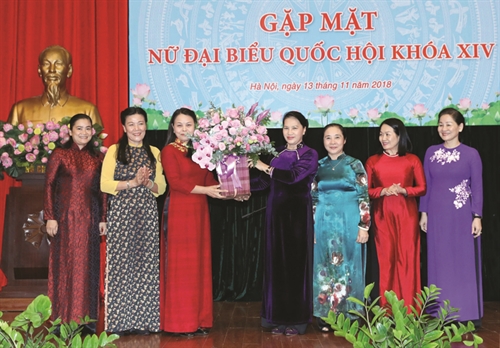 |
| National Assembly Chairwoman Nguyen Thi Kim Ngan presents a bouquet of flowers to leaders of the Vietnam Women’s Union at a meeting of female deputies to the 14th National Assembly in Hanoi on November 13__Photo: Trong Duc/VNA |
Women’s political participation at present
The Party’s Politburo Resolution 11 of 2007 sets the goal: “By 2020, the rate of female cadres elected to Party committees at all levels will reach 25 percent or higher; female deputies will make up 35-40 percent of the total number of deputies to the National Assembly and People’s Councils of all levels; agencies and units with women accounting for 30 percent or more of their total employees will have female cadres holding key leading positions; and the Party, National Assembly, State and Government will have women holding high-level leading positions at a proportion suitable to the gender equality goal.”
In light of the Resolution, in 2011, the Prime Minister approved the National Strategy on Gender Equality for the 2011-20 period, setting an objective to increase women’s participation in managerial and leading positions in order to gradually narrow the gender gap in the political realm. The strategy also sets three specific targets to achieve. They are: (i) women will account for at least 25 percent of members of Party committees at all levels in the 2016-20 tenure and hold at least 30 percent of seats in the National Assembly and People’s Councils in the 2011-15 term and over 35 percent in the 2016-20 term; (ii) by 2015, 80 percent, and by 2020, over 95 percent of ministries, ministerial-level agencies, government-attached agencies and People’s Committees will have female leaders; and (iii) by 2015, 70 percent, and by 2020, 100 percent of Party and State agencies and socio-political organizations with female employees making up 30 percent or more of their total employees will have women in key leading positions.
However, reality fails to meet expectation. According to a Briefing Report on Gender Equality released by the Government in October 2017, the country fell short of the first target, while the realization of the second and third targets remains uncertain.
Percentage of women participating in Party committees at all levels
Statistics in Table 1 below show that although the percentage of women participating in Party committees at all levels keeps increasing over time but remains low and below the set target of 25 percent. The highest figure, roughly 20 percent, is recorded at commune-level Party committees of the 2015-20 tenure, an increase of 2 percent over the preceding tenure. Meanwhile, the percentage of female cadres holding top leading positions is still very low. Among 19 members of the Political Bureau of the 2015-20 tenure, only three are women, while the number of female members of the Party Central Committee is just 15 among 166, accounting for 7.8 percent. (see Table 1)
Table 1. Percentage of women participating in Party committees at various levels
| 2006-10 tenure | 2010-15 tenure | 2015-20 tenure | |||||||
| Provincial-level | District-level | Commune-level | Provincial-level | District-level | Commune-level | Provincial-level | District-level | Commune-level | |
| Standing boards | 7.9 | 7.8 | 5.8 | 8.3 | 10.2 | 9.1 | 10.7 | 12 | 10.7 |
| Party committees | 11.8 | 14.7 | 14.4 | 11.3 | 15.2 | 18 | 13.3 | 14.3 | 19.69 |
Percentage of female deputies to the National Assembly and People’s Councils[1]
Looking at Table 2 below, it can be easily noticed that the rates of women elected to the National Assembly and People Councils of the 2016-21 term are higher than those of the previous terms but still much lower than the set target of over 35 percent. Particularly, the three provinces of Quang Nam, Tay Ninh and Thua Thien-Hue have no female deputies in the National Assembly, while 25 other localities see a female deputy rate of under 20 percent. (see Table 2)
Table 2. Percentage of female deputies to the National Assembly and People’s Councils
| 2007-11 term | 2011-16 term | 2016-21 term | |
| Number of female deputies to the National Assembly/Rate (percent) | 127/25.8 | 122/24.4 | 132/26.8 |
| Percentage of female deputies to People Councils (percent) - Provincial level - District level - Commune level |
23.9 23 19.5 |
25.2 24.6 21.7 |
26.6 27.5 26.6 |
The rates of women holding key positions in the National Assembly such as National Assembly Standing Committee member or National Assembly Committee chairperson are also modest (Table 3). However, for the 2016-21 term, Vietnam has the first-ever chairwoman of the National Assembly, the highest state power body of the country. This is an encouraging move in the implementation of the Party’s line and State’s policies and laws on guaranteeing women’s right to political participation.
Although failing to meet the targets set in the Party’s Resolution 11 and the National Gender Equality Strategy, compared to other countries around the world, Vietnam has seen a positive progress in the improvement of gender equality and female participation in politics over the years. The rate of women deputies to the Vietnamese National Assembly has increased to 26.72 percent, higher than the global average rate of 22.3 percent[2]. As evaluated by the World Economic Forum, in 2016, Vietnam ranked 65th among 144 countries in the gender gap index, a jump from the 83rd grade in 2015[3]. Earlier in 2014, Vietnam was placed at the 3rd position among ASEAN members and 47th among 187 countries participating in a survey in gender equality practices[4]. (see Table 3)
Table 3: Percentage of women holding key positions in the National Assembly
| Position | Term | |||
| 2002-07 | 2007-11 | 2011-16 | 2016-21 | |
| Member of the National Assembly Standing Committee | 22.1 | 15.76 | 23.63 | 27.7 |
| Chairperson of National Assembly Committee | 25 | 22.22 | 11.11 | 25 |
Percentage of women holding key positions in the state apparatus:
The Vietnamese Government’s 2017 Briefing Report on Gender Equality admitted that the two targets of “having 80 percent and over 95 percent 0agencies and local administrations having female leaders by 2015 and 2020, respectively” and “having women holding key leading positions at Party and State agencies and socio-political organizations with female employees accounting for 30 percent or more of their total payroll” can hardly be attained despite efforts of related entities.
In reality, Vietnam, as a state member to CEDAW, has spared no efforts to eliminate all forms of discrimination against women and actually became an active member of the international community in promoting the enforcement of the right to gender equality. However, the failure to attain the targets on women’s political participation shows that Vietnam has not yet fully delivered on its international commitments. The country has not yet implemented every appropriate measure to eliminate discrimination against women in the political and public life in conformity with CEDAW. As a result, some women’s rights such as the right “to hold public office and perform all public functions at all levels of government[5]” and “to participate in non-governmental organizations and associations concerned with the public and political life of the country[6]” are not fully guaranteed. The administrations also fail “to take all appropriate measures, including legislation, to modify or abolish existing laws, regulations, customs and practices which constitute discrimination against women[7]” as well as to guarantee women’s “right to promotion[8]” at work and “to encourage the provision of the necessary supporting social services to enable parents to combine family obligations with work responsibilities and participation in public life, in particular through promoting the establishment and development of a network of child-care facilities.”[9]
Recommendations
In order to improve women’s participation in politics, efforts should be concentrated on the implementation of the following solutions.
First, the awareness of ministries, sectors and local administrations about gender equality and gender-related issues needs to be enhanced. Vietnamese history from ancient times to the present has demonstrated that women are as capable as men in political, military, economic, cultural and social fields. Therefore, appropriate measures should be taken to prevent and stop gender bias against women and their role in family and society, if it does exist, among state officials from the central to local level. Particularly, it is necessary to handle Party and State agencies that fail to meet gender-related targets and requirements, especially in case such a failure reduces or hinders women’s opportunities for political participation.
Second, the percentage of women participating in state agencies from the central to local level should be legislated. Specifically, the Law on Gender Equality should be revised to abolish qualitative requirements such as “ensuring an appropriate percentage of female deputies to the National Assembly and People’s Councils in conformity with the national targets on gender equality.” Instead, it should set down specific numbers corresponding to the female population in the whole country and in each locality.
Third, Vietnam should further boost cooperation with countries which have recorded achievements in education, dissemination and implementation of the gender equality law so as to learn their experiences, thus helping state agencies and the public adopt a positive viewpoint about the role and position of women and, at the same time, affirming the country’s determination to fulfill its international commitments on gender equality.-
